Use light to create an energy efficient and sustainable environment
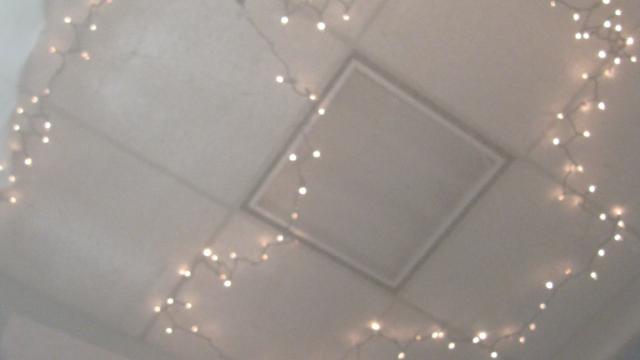
Light well designed by youth at Chicago Public Library
Project Background
The Sustainability Hack was an initiative for high school teens to learn about and bring public awareness around energy and well-being, alternative energy systems, energy use, use of artificial and natural light. The project explored renewable and nonrenewable energy sources, energy careers and light with eLearning support from AAO Member, NEXT.cc Elearning Designopedia
You can watch the video here of the learning experience the teens went through learning about energy sustainability.
8 high school teens form the Student Design Team were tasked to create models (digital and physical) of the YOUmedia Space at the Harold Washington Library Center applying energy reducing strategies and concepts listed above to create a more energy sustainable space. In addition, the SDT created this design challenge using
Overview
Light makes up everything we can perceive. Starting with light to create an energy efficient and sustainable environment is a no brainer if you're looking to lead a more sustainable and efficient lifestyle. In this design challenge, you will do more than just make the space you’re working with more maintainable; you will let others see what they can do to make an positive energy impact of their own.
Design Brief:
The goal of this project, besides learning about light and energy efficiency, is to help people have a general approach to developing sustainable practices and save energy with light.
Constraints
- A public space (library, hang out space, etc..).
- Existing infrastructure
Next.cc Resources
Materials
Physical Model
- Cardboard
- Aluminum foil
- Tape
- String
- Scissor
- Measuring tape
- Ladder (if needed for measuring the real alcove)
- White mesh fabric
- Flashlight (LED or incandescent)
Digital Model
- Install Sketchup, Minecraft, Tinkercad, or paint.
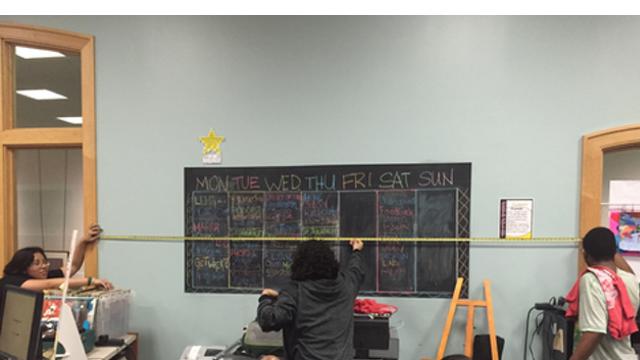
Measuring dimensions is key.
Try This:
Measure all available lighting and light use, the temperature of your space (hot/cold spots), color heat absorption, and overall energy use.
Addressing how to assess a space’s sustainability through tools like lux meters will give you a good measure of each light’s electrical consumption and will help you in adjusting the spaces brightness.
Photometers can be used for a broad range data collection and light from illuminance in lux to reflectiveness, absorption, and scattering. It gives more specific information on the light in a space.
You can measure the brightness that you'll observe in a space in lux; The SI unit of illuminance, equal to one lumen per square meter. An overcast day is about 1000 lux, while an office can have between 300 and 500 lux
Next.cc Resources
Big Idea:
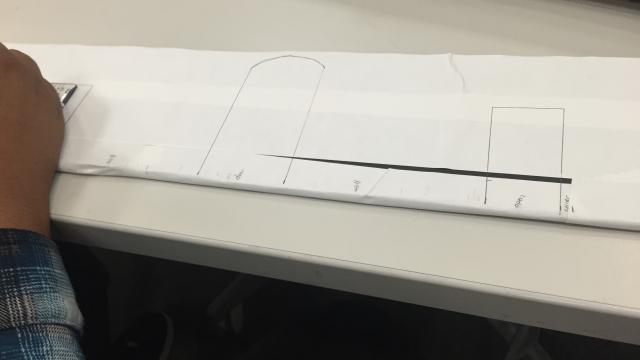
Sketch of initial idea
Think About
Incandescents generate heat while fluorescents generate cool blue light. These differences can confuse people at first, but being more aware of the types of energy these bulbs create is necessary to light your space efficiently.
Try This
Light Bulb Model: There are three different type of bulbs, LED’s, incandescent, and fluorescent, and each have their own uses. Each varies in energy usage (watts per hour), illuminescence, life span. Which bulbs are being used in your space? What other bulbs could be used in more energy efficient ways?
Use the materials listed to construct a model using different types of lights to brainstorm different ways light may interact with a space.
You can check out the Youth-Authored Model Guide if you need help starting a light model.

Light well prototye
Think About
Incandescents generate heat while fluorescents generate cool blue light. These differences can confuse people at first, but being more aware of the types of energy these bulbs create is necessary to light your space efficiently.
Try This
Light Bulb Model: There are three different type of bulbs, LED’s, incandescent, and fluorescent, and each have their own uses. Each varies in energy usage (watts per hour), illuminescence, life span. Which bulbs are being used in your space? What other bulbs could be used in more energy efficient ways?
Use the materials listed to construct a model using different types of lights to brainstorm different ways light may interact with a space.
You can check out the Youth Authored Light Model Instructions if you need help starting a light model.
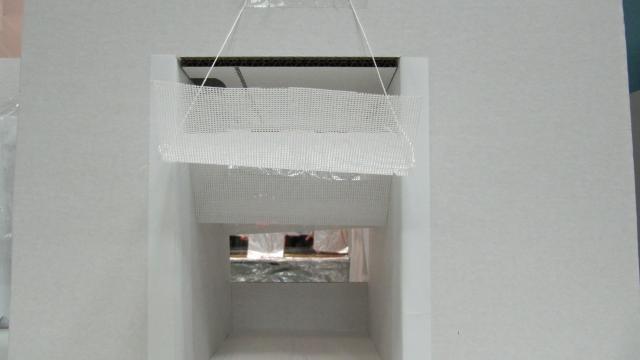
Light Well prototype - no light
Think About
Incandescents generate heat while fluorescents generate cool blue light. These differences can confuse people at first, but being more aware of the types of energy these bulbs create is necessary to light your space efficiently.
Try This
Light Bulb Model: There are three different type of bulbs, LED’s, incandescent, and fluorescent, and each have their own uses. Each varies in energy usage (watts per hour), illuminescence, life span. Which bulbs are being used in your space? What other bulbs could be used in more energy efficient ways?
Use the materials listed to construct a model using different types of lights to brainstorm different ways light may interact with a space.
You can check out the Youth Authored Light Model Instructions if you need help starting a light model.

Light well prototype catching light.
Think About
Incandescents generate heat while fluorescents generate cool blue light. These differences can confuse people at first, but being more aware of the types of energy these bulbs create is necessary to light your space efficiently.
Try This
Light Bulb Model: There are three different type of bulbs, LED’s, incandescent, and fluorescent, and each have their own uses. Each varies in energy usage (watts per hour), illuminescence, life span. Which bulbs are being used in your space? What other bulbs could be used in more energy efficient ways?
Use the materials listed to construct a model using different types of lights to brainstorm different ways light may interact with a space.
You can check out the Youth Authored Light Model Instructions if you need help starting a light model.
Next.cc Resources
Materials
Physical Model
- Cardboard
- Aluminum foil
- Tape
- String
- Scissor
- Measuring tape
- Ladder (if needed for measuring the real alcove)
- White mesh fabric
- Flashlight (LED or incandescent)
Digital Model
- Install Sketchup, Minecraft, Tinkercad, or paint.
Tools of the Trade

Scaling up the idea of one light well to many light wells around a model of the physical space.
Use research and smaller scale tests to apply possible solutions on the bigger scale, and make a space more energy efficient and sustainable.
Try This
-
Modeling Your space: When thinking about adapting a space to be more energy sustainable, it may seem like you don’t have a clear place to start. Building a model of your space (room, library, etc..) helps bring into focus what affects the space in terms of lighting, furniture placement, and color. Even a rudimentary design gives you room to sketch out plans for what you could change. Think about how one adjustment will affect the entire space without wasting resources on testing it in the actual space. In essence, it's a drawing board before you go all into the physical model.
Take into account how light could affect the space based on the model. Think about how the sun gets in, or how you can make changes based on the current lighting. Consider how you could model it on a smaller scale (ex. 50th scale on 3000 sq foot room). Make sure to test out the different lighting methods with your model (i.e. Incandescent vs Fluorescent vs LED, how placement in the space changes where the light reaches, different designs); if you don’t have the resources to test out light with a physical model, give digital models a try.
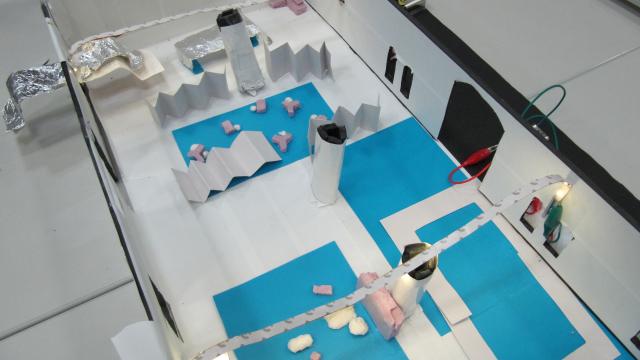
Scaling up the idea of one light well to many light wells around a model of the physical space.
Use research and smaller scale tests to apply possible solutions on the bigger scale, and make a space more energy efficient and sustainable.
Try This
-
Modeling Your space: When thinking about adapting a space to be more energy sustainable, it may seem like you don’t have a clear place to start. Building a model of your space (room, library, etc..) helps bring into focus what affects the space in terms of lighting, furniture placement, and color. Even a rudimentary design gives you room to sketch out plans for what you could change. Think about how one adjustment will affect the entire space without wasting resources on testing it in the actual space. In essence, it's a drawing board before you go all into the physical model.
Take into account how light could affect the space based on the model. Think about how the sun gets in, or how you can make changes based on the current lighting. Consider how you could model it on a smaller scale (ex. 50th scale on 3000 sq foot room). Make sure to test out the different lighting methods with your model (i.e. Incandescent vs Fluorescent vs LED, how placement in the space changes where the light reaches, different designs); if you don’t have the resources to test out light with a physical model, give digital models a try.
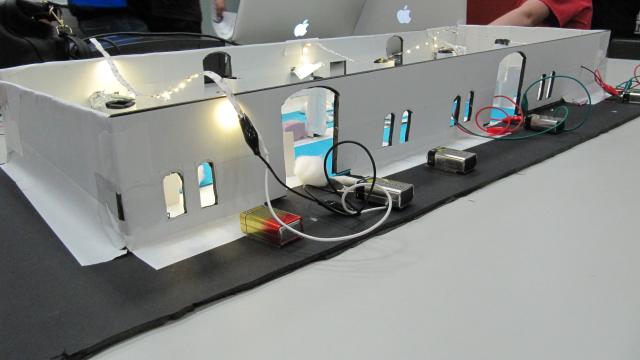
Scaling up the idea of one light well to many light wells around a model of the physical space.
Use research and smaller scale tests to apply possible solutions on the bigger scale, and make a space more energy efficient and sustainable.
Try This
-
Modeling Your space: When thinking about adapting a space to be more energy sustainable, it may seem like you don’t have a clear place to start. Building a model of your space (room, library, etc..) helps bring into focus what affects the space in terms of lighting, furniture placement, and color. Even a rudimentary design gives you room to sketch out plans for what you could change. Think about how one adjustment will affect the entire space without wasting resources on testing it in the actual space. In essence, it's a drawing board before you go all into the physical model.
Take into account how light could affect the space based on the model. Think about how the sun gets in, or how you can make changes based on the current lighting. Consider how you could model it on a smaller scale (ex. 50th scale on 3000 sq foot room). Make sure to test out the different lighting methods with your model (i.e. Incandescent vs Fluorescent vs LED, how placement in the space changes where the light reaches, different designs); if you don’t have the resources to test out light with a physical model, give digital models a try.
Next.cc Resources
Model Resource
What should I upload?
- Physical Project: Small-Scale Sustainable Space, Light Alcove
- Digital Project: 3D perspective of a space or room

The final step of the design process is to create a more finished model that communicates your ideas to others and shows a progression of thought from when you first started. It should also solve the design problem you started with. Does your final design meet the criteria to solve your original problem? If so, you're finished!
Use this space to upload your final project.
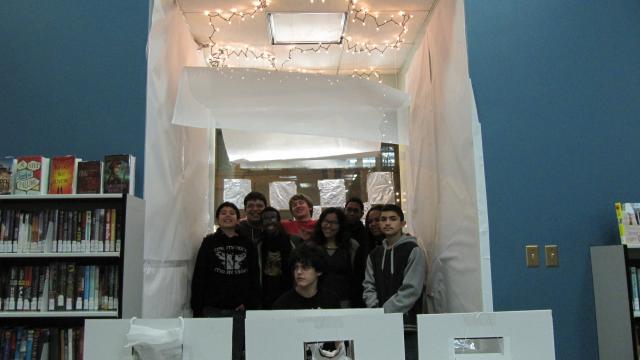
The Student Design Team
Special thanks to The Student Design team who contributed to the SmartGrid Challenge and authored this design challange!
- Swann R. - 11th grade
- Ashley B. - 11th grade
- Alexander P. - 11th grade
- Laszlo T. - 11th grade
- Capree A. - 11th grade
- Cesar R. - 9th grade
- Robert D. - 11th grade
- Roberto C. - 11th grade
